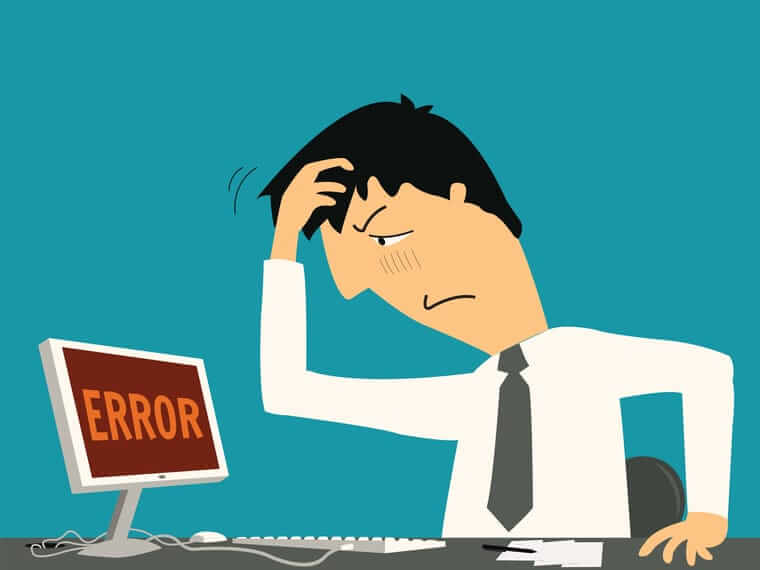Share This
Visitor Anxiety: Understanding and Overcoming Hurdles to Conversions

Many businesses experience similar hurdles when trying to improve website conversion rates, and one of the most significant hurdles is visitor anxiety. Visitors may experience various types of anxiety when interacting with a website – from privacy and security concerns to uncertainty about the quality or reliability of a certain product. By addressing these anxieties, businesses can foster a more positive user experience and encourage visitors to complete conversions.
In this article, we will discuss the impact of visitor anxiety on website conversions and explore some of the strategies businesses use to overcome visitor anxiety-based challenges.
What is visitor anxiety?
Visitor anxiety may refer to feelings of apprehension, fear, or general unease that visitors to a website can experience throughout the customer journey. Visitor anxiety can arise as a result of numerous factors, from concerns about privacy to difficulty navigating the site, unclear information about products or services, and others. Additionally, all visitors will likely experience at least some level of anxiety upon reaching the call to action. Importantly, however, businesses must understand that removing all sources of anxiety from websites is an unrealistic expectation. There are many techniques, and strategies businesses can deploy in order to lessen visitor anxiety, but anxiety itself cannot be eradicated outright.

How visitor anxiety affects conversions and user experience
Visitor anxiety can have a significant impact on conversions and user experience. To reduce visitor anxiety, businesses must first identify areas of the website that may need improvement – like the poor layout and navigability, lack of trust signals, overwhelming or convoluted content, overly aggressive calls to action, and complex conversion processes.
When visitors feel uncertain or uncomfortable on a website, they are much less likely to stick around, let alone develop trust in the brand or take desired actions. By identifying and rectifying those main sources of visitor anxiety, however, businesses can create a much more positive user experience that encourages users to engage with the site meaningfully and ultimately convert into customers.

Strategies for reducing visitor anxiety
There are numerous things businesses can do to lower the anxiety of site visitors. In this section, we will go over some of the most common methods for reducing visitor anxiety:
Improving web design and user experience
One of the most effective ways to reduce visitor anxiety and encourage conversions is to improve the design and user experience (UX) of your website. By simplifying navigation, ensuring mobile-friendliness, and streamlining page loads, businesses can help visitors feel more welcome and more comfortable while interacting with the website. With clear messaging, easy-to-use forms, and visible trust signals (like security badges and customer reviews), visitors can have greater confidence and a greater likelihood that they will convert into customers.
Enhancing website credibility
Another effective way to reduce visitor anxiety is by enhancing website credibility. This can look like displaying trust signals or seals, certifications, and affiliations that establish credibility and inform visitors of the site’s trustworthiness. Showcasing testimonials and case studies can also help demonstrate the quality and value of your organization’s products and/or services.
By strategically highlighting industry expertise and displaying elements of credibility throughout the company’s website, businesses can reduce visitor anxiety and cultivate a sense of trust and confidence that encourages more conversions.
Clarifying content and messaging
Organizations that take great care in clarifying content and messaging can also go a long way in reducing visitor anxiety levels. By crafting compelling headlines and calls-to-action (CTAs), organizations can enable visitors to understand the value of the products and services and encourage more conversions. By using clear, easy-to-understand language, websites can also reduce visitors’ confusion and uncertainty, making it easier to navigate the site.
Organizing content for readability, including relevant images, and keeping page load times quick can all help make the website more accessible and reduce visitor anxiety.
Simplifying conversion processes
Businesses can achieve conversion process simplification by reducing form fields (which minimizes the effort visitors must expend), offering multiple payment options, and facilitating a secure transaction. By providing clear instructions and progress indicators throughout the conversion process, businesses can reduce uncertainty and help visitors feel more confident during conversion. Simplifying the conversion process is one of the most important aspects related to increasing conversion rates and alleviating visitor anxiety.
Face anxiety head-on
Companies can also face visitor anxiety “head-on” by implementing effective tactics like offering guarantees, adding their highest point of trust near forms to establish greater credibility, and including a “no-spam” policy to address privacy or security concerns. Additionally, businesses can provide clear and concise information about what visitors will receive after filling out a form.
When proactively addressing visitor anxiety, businesses can create more positive user experiences that encourage visitors to take desired actions (like filling out forms) and help convert more visitors into loyal customers.

Monitoring and measuring the impact of anxiety-reducing efforts
In order to understand the impact of a business’s anxiety-reducing efforts, monitoring and measuring processes must be implemented throughout the process. Organizations can leverage analytics and tracking tools like Google Analytics to help gather data on user behavior and engagement (including valuable data like click-through rates, bounce rates, and time spent on pages).
Additionally, heat mapping tools like Crazy Egg and Mouseflow can also provide helpful information related to user behavior and engagement by visualizing how, precisely, visitors interact with the site. When businesses analyze this data, they can more easily identify areas for improvement and continue to refine anxiety-reducing initiatives to optimize user experiences and augment conversions.
Conclusion
Addressing visitor anxiety is an essential marketing tactic that enables businesses to improve website conversions and create more positive user experiences. By alleviating some visitor anxiety with the strategies listed above, businesses can improve brand perception, cultivate more loyal customers, and potentially increase revenue streams.
However, it is also crucial to continuously evaluate and refine anxiety-reducing efforts by implementing analytics tools that can provide insights into user behavior and engagement. By doing so, organizations can quickly identify areas for improvement and continue to improve visitors’ user experience throughout the customer journey, ultimately creating a more successful and welcoming website.